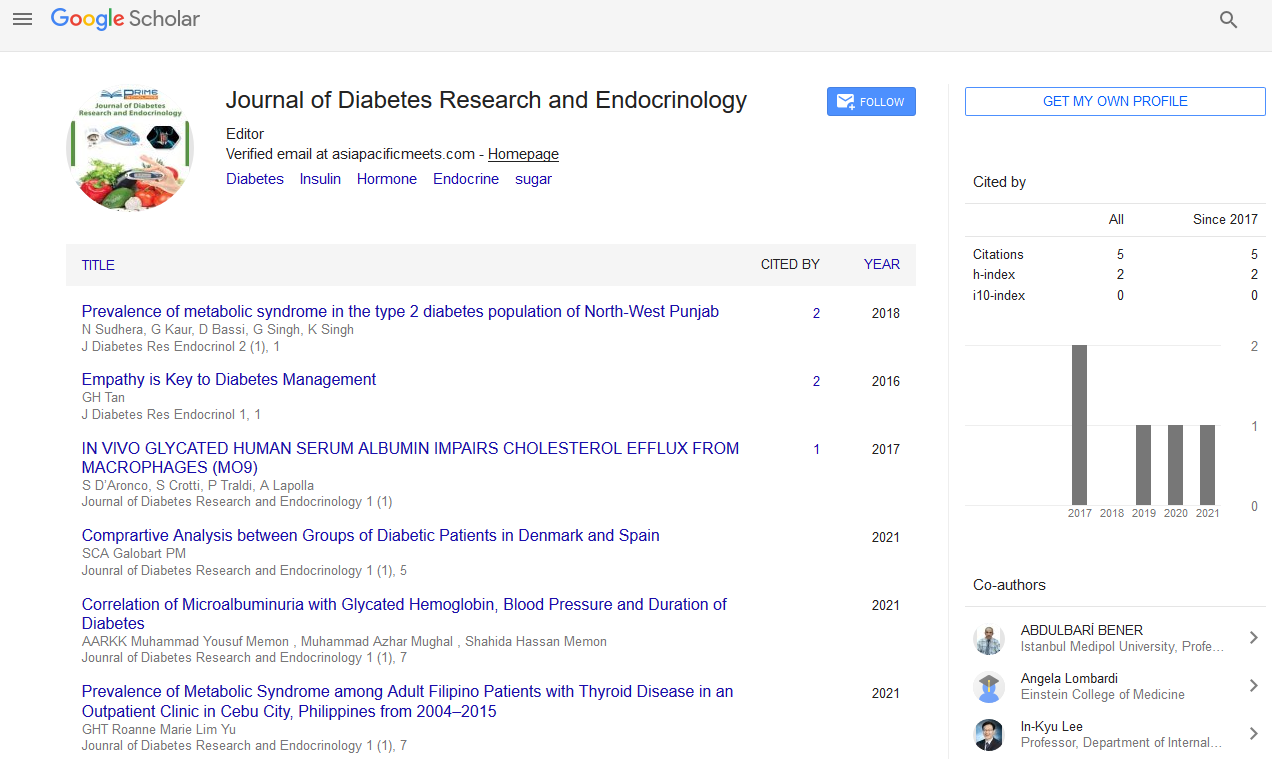Perspective - (2023) Volume 7, Issue 2
Anaplastic Thyroid Illness is Described by Developments that are Insufficiently Isolated and Undifferentiated
Jason A Wexler*
Department of Endocrinology and Diabetes, University of Belgrade, Serbia
*Correspondence:
Jason A Wexler,
Department of Endocrinology and Diabetes, University of Belgrade,
Serbia,
Email:
Received: 31-May-2023, Manuscript No. IPJDRE-23-16903;
Editor assigned: 02-Jun-2023, Pre QC No. IPJDRE-23-16903;
Reviewed: 16-Jun-2023, QC No. IPJDRE-23-16903;
Revised: 21-Jun-2023, Manuscript No. IPJDRE-23-16903;
Published:
28-Jun-2023, DOI: 10.36648/ipjdre.7.2.13
Introduction
A kind of thyroid threatening development where the illness
cells appear to resemble customary thyroid cells when seen
under an amplifying instrument. The majority of separated thyroid
tumours form in the thyroid organ’s follicular cells. They
typically progress over time, can be managed, and generally
relieved. Papillary thyroid cancer and follicular thyroid cancer
are the two most prevalent forms of well-differentiated thyroid
cancer. Most of very much separated thyroid malignant
growths are relieved and have a good forecast.
Description
These are the most severe types of damage to the thyroid.
Most of thyroid malignant growths are separated thyroid carcinoma
(DTC), which incorporates papillary carcinoma and follicular
carcinoma. With a 5-year survival rate greater than 95%,
DTC patients have an excellent prognosis after treatment. Yes,
you can get treatment for most thyroid cancers, especially if
the cancer hasn’t spread to other parts of your body. Papillary
thyroid disease and follicular thyroid cancer are two examples
of around-separated growths that can be treated and typically
restored. Anaplastic thyroid disease is characterized by
growths that are inadequately separated and undifferentiated.
These tumours have a lower chance of recovery due to their
rapid growth and spread. DTC is a rare disease that usually goes
away without a problem. The onset of DTC is influenced by a
wide range of factors, including gender, age, family history, and
exposure to radiation. 7%-15% of thyroid medical procedure
patients foster DTC. Radiation exposure has been shown to
increase the risk of thyroid disease. Examples of such sources
include nuclear weapons, accidents at power plants, and radiation
from certain medical procedures. People who have had
radiation treatments to the head or neck as children are more
likely to develop thyroid cancer. These undifferentiated cancers
contain the most bizarre-looking cells. Higher-grade cancers
ordinarily develop and spread more rapidly than lower-grade
growths. Anaplastic thyroid cancer can only be treated with
one option: Surgery. No exceptions apply. We do know that anaplastic
thyroid cancer is almost always fatal once it has spread
to distant organs. The majority of cancers can be treated with a
thyroidectomy, or removal of the thyroid gland. However, small
tumours that have not spread outside of the thyroid gland can
be treated with lobectomy, or the removal of the side of the
thyroid that contains the tumour. A malignant tumour that
is extremely uncommon and aggressive is anaplastic thyroid
carcinoma, also known as undifferentiated thyroid carcinoma.
It causes between 2% and 3% of all thyroid-related tumours.
Anaplastic thyroid carcinoma, one of the world’s most deadly
diseases, still has a very poor prognosis.
Conclusion
Follicular and papillary thyroid cancers are the most common
types of differentiated thyroid cancer. They can always be fixed,
especially if discovered early and in people younger than 50.
Together, follicular and papillary tumors account for 95% of all
thyroid cancers. This tells how much or how little cancer tumor
tissue looks like normal tissue. Very much separated disease
cells will quite often develop and spread at a slower rate than
ineffectively separated or undifferentiated malignant growth
cells and have a more typical appearance.
Citation: Wexler JA (2023) Anaplastic Thyroid Illness is Described by Developments that are Insufficiently Isolated and Undifferentiated. J Diab Res Endocrinol. 7:13.
Copyright: ©2023 Wexler JA. This is an open-access article distributed under the terms of the Creative Commons Attribution License, which permits unrestricted use, distribution, and reproduction in any medium, provided the original author and source are credited.

